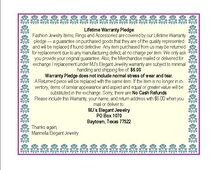Project Management
According to Kotter and Cohen, “Sending clear, credible, and heartfelt messages about the direction of change [is].... Establishing genuine gut-level buy-in that shows up in how people act. Use of words, deeds, and new technologies to unclog communication channels [will have prevailed to] overcome confusion and distrust” (2002).
Project management is a liaison career, where the Project Manager is collecting information from stakeholders in the company he represents, and translating that into tasks to assign his subordinates and contractors to execute and take a project to completion. As projects roll along, the informed Project Manager, PM, is responsible to inform his customer who hired his company in first place of how things are going.
Customers will have suggestions, and upgrades, and second thoughts for projects to drop and parts to add. Hey! Essentially, all stakeholders will have last word input as to what fits core competency of their own companies.
There is complexity to measure. It is implicit value our Project Manager adds as leader in his or her ability to handle divergence of strategies and risks. All core focus topics, including risk, are augmented by weighing and learning of the Project Manager. Thereby, the endorsed role, of Project Manager in charge of reserves of information to be doled out to various involved groups, is well defined.
Even when the Project Manager “brings up risk management and sees questioning looks in [the] eyes” of his project team members; his project knowledge intuition tells him that “all will soon realize that risk management means different things to different people” (Task Detail; 2006).
This discussion paper tries to pull together several layers of very comprehensive and lengthy bodies of information, to summarize the blending of many secondary resources for reason of illuminating some of the thinking behind management of risk.
Anticipating Risks
George Jucan in his review of PMBOK Third Edition “provides a comprehensive classification through knowledge area definitions.” This is useful because “...One of the main reasons to estimate project complexity is to be able to compare projects” (Jucan; June 21, 2006). For example:
In some cases, maybe the human resources aspect of the project needs special attention because of high turnover or labor unrest in the specific department. For fixed-price projects, maybe the cost dimension is more important, while the first project for a new customer might have an increased focus on scope management to fully satisfy the client (Jucan; June 21, 2006).
Project Manager’s role in defined terms is; he will be able to “summarize the above considerations, and apply [to] project complexity ...as project integration management [using] indicators that:”
• Consolidate indicators of other eight knowledge areas: scope, time, cost, quality, human resources, communication, and procurement.
• Ask: Is it objective at organization level, to be valid for any undertaken project?
• Ask: Is it subjective at project level, to account for the unique characteristics of each project? (Jucan; June 21, 2006)
Chapter Eleven of the Project Management Body of Knowledge, PMBOK, identifies risk management as one of the nine most important awareness structures. Using simple scales with three choices each for “probability and for impact” we can turn the confused facial expressions to concentration on responses to early warnings of risky business (PMBOK, 2004).
Risk Management is not the act of going through the proposals and pointing out why every task has a high potential to fail. No, that is not the higher purpose for understanding risk. Truer intention rises above this single-minded intuition; rather risk identification means to remove masks of risks inherent in all projects. A risk managed is a resource conserved.
Risk is Iterative
Risk management fits the iterative processes of project management like keys unlocking closed doors to opportunities that have doors to other opportunities. “Many processes are fashioned in response to critical cost areas, and to redundancy” that indicate and rectify risk (Krajewski, L J, & Ritzman, L P; 2005). A template for qualitative risk analysis might take a form like the one in Dick Billows article:
- Achievement-Driven Project Management
- Risk Event Probability of Occurrence Magnitude of Impact Risk Response
- Name Medium High Low Medium High No Action Type of Action
The language of Project Management is “intensely combed through for every project in iterative trials of cause and effect to cleanse to acknowledge best practices for each project. The work is amazingly correlated as simply:
Realization >> Strategic Choice >> Tactical Contingency...
Moreover, sub-processes today also employ sophisticated feedback tools developed to help in cost control;” the major indicator of risks: cost overruns (Bredillet, Christophe N; 2002).
Risk is beat down by frequent reporting, and auditing of changes in iterative vernacular. A risk identified and scoring high in both “probably will occur, with high magnitude of impact” is a risk that needs further study. And to make sure the additional study will be done with controlled experiments that provide quantitative results.
Conflict is an unavoidable pretext in project context, as each entity has unique and differing thoughts, ideas, and opinions. Therefore, it is important to learn ways to minimize and manage this difficulty, in order to ensure “efficient and harmonious iterative interactions during the project’s life-cycle” (CTUOnline, Live Chat; Nov 2006).
Risk Management
Dick Billows, PMP, GCA of 4PM says, “We can do a few minutes of risk management on even the smallest project and get good return for the effort. Dealing with risk does not have to be a paperwork jungle.” Project managers run the risk of “fighting fires for the rest of the project... [When] even a small project can under-take a simple risk assessment process,” at the first team meetings, says Billows. “Because the sponsor wants to start quickly without wasting time on things like risk management, Project Managers often skip the risk assessment process” (Billows, Dick, 2006).
The handiest way to “prioritize our risks in terms of their significance” (Billows) for the project -- “Automated Mobile Defense System, AMDS,” -- is to use qualitative techniques like the survey template above to pre-qualify certain risk areas for higher costing quantitative techniques of risk analysis. This team and project manager have been assigned to “lead Project X, which will design, develop, test, demonstrate and deploy 10 AMDS units to a location to be determined by the DOD assuming a successful demonstration” (CTUOnline, Task Detail; 2006).
The PMBoK framework provides the fundamentals of project management in respect to the type of project to be completed and is structured around 5 basic progression placeholders. Those progressive process groups are Initiate, Plan, Execute, Control, and Close.
George Jucan in his article Complexity Matters describes time savings is “at the start... Taking your time to measure before you cut is always good advice. In a Project Manager's world, spending the time to plan the project and open up probable risks is proven to dramatically increase the chances of success” in:
• Planning: defining the scope of the project risk and putting a value to it makes the necessary campaign to carry it out.
• Executing: Now that we have identified our project risk and planned for its purpose, our next step is to put our plan into action by adjusting and...
• Controlling: we monitor all aspects of the project risk. We review and check the integrity of all inputs and outputs in respect to the project threats.
• Closing: we make sure the final product has the quality and completion that was originally planned and that all risks are conserved in documentation and covered monetarily.
Therefore, the project starts with half a day of teams “risk-storming” to identify, and qualify risks in each of the sub-processes. After that they will determine the risks most impacting the life-cycle and put some heavier tools of quantitative analysis to work. This will have unlocked potential for increased probability and impact of events positive to the project.
Conclusion
The beauty of project management is that with knowledge and learning, the wheel doesn’t have to be re-invented each time a project begins. Project Management Body of Knowledge, PMBoK, is a compilation of processes and knowledge areas generally accepted as best practices in context of Project Management discipline (pmi org, 2006).
Each new project gives rise to opportunity to re-visit honesty and integrity. In a lifetime of projects, a little reliability goes a long way to mitigate and take the edge off all risks in projects. >>pd
References
Billows, Dick; (2006) Risk management & analysis prevention not lots of paperwork, 4PM Project management training and certification, Denver, CO, The Hampton Group
Bredillet, Christophe N; (2002) PMI July 14 2002, Seattle, International Educational Network, PPT, founding principles for the development of a value added network for global education
CTUOnline (November 2006) Live Chat, MPM450 03 0604B Managing Project Risk and Opportunities
CTUOnline (November 2006) Task Detail, MPM450 03 0604B Managing Project Risk and Opportunities
Encarta MSN online dictionary; (2003) English: American 2003
Jucan George, MSc, PMP, OCP, SSGB (June 21, 2006) Complexity Matters, [Gantt head]>home>departments>Project Portfolio Management, retrieved 10/10/06
Kotter, John P and Cohen, Dan S; (2002) the Heart of Change: Real-Life Stories of How People Change Their Organizations (Hardcover) HBS Press Book, Pub. Date: June 17, 2002, 208p
Krajewski, L. J., & Ritzman, L. P. (2005) Operations Management Processes and Value Chains, 7th ed, Upper Saddle River, NJ, AK: Pearson Prentice Hall
PMBOK; (2004) A Guide to the Project Management Body of Knowledge, PMBOK Guide, third edition, 2004 project management Institute, 4 Campus Blvd, Newton Square, PA 19073 USA
Pmi org (2006) retrieved from web, Nov 15 2006 Project Management Institute (PMI) The Largest Project Management Association. Retrieved October 19, 2006, from pmi org info default asp































1 comment:
I agree with the Billows comment that even just a few minutes of risk management analysis can produce excellent returns on effort.
________
John Reiling, PMP
Project Management Training Online
Lean Six Sigma Training Online
Post a Comment